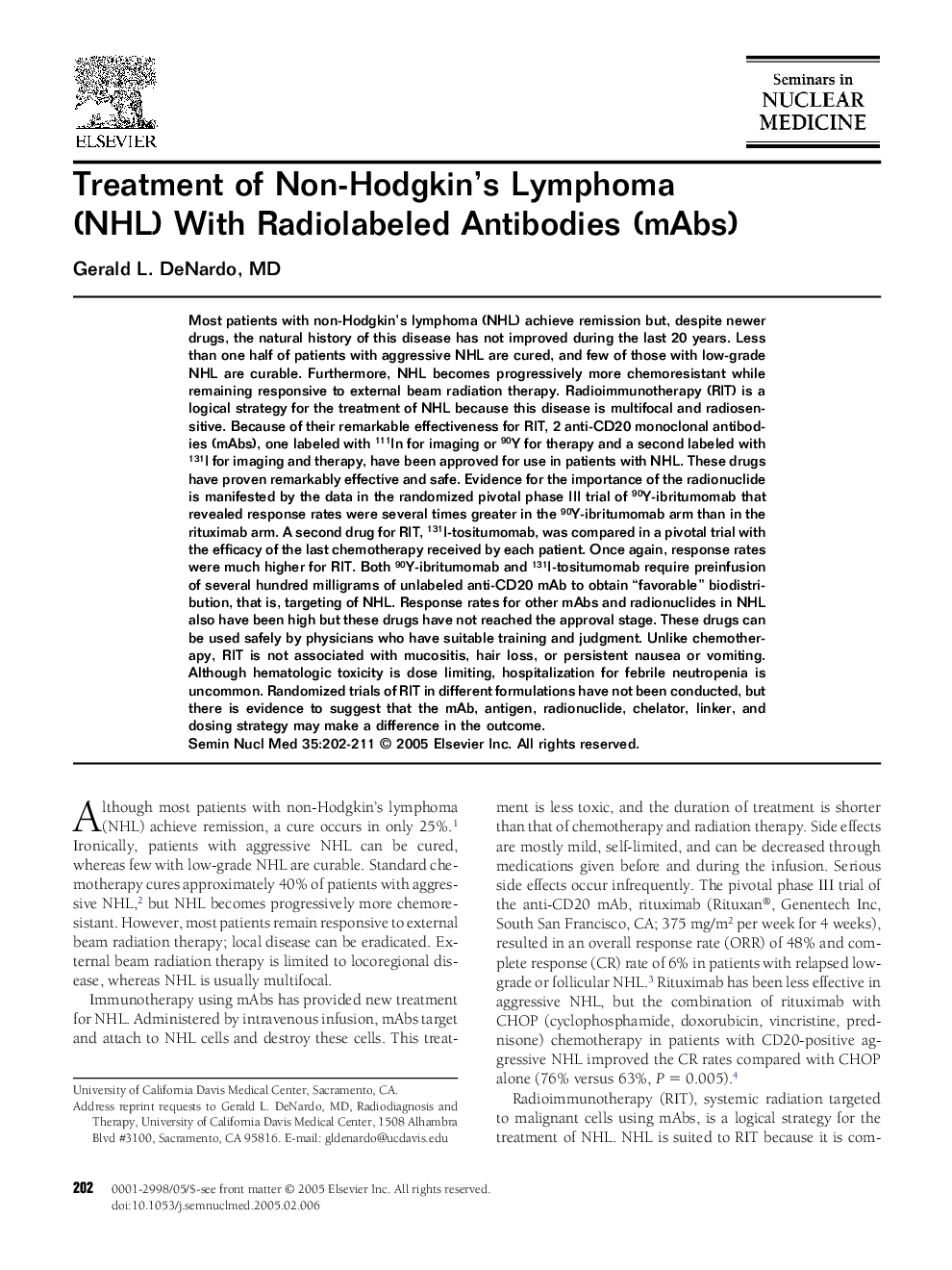| Article ID | Journal | Published Year | Pages | File Type |
|---|---|---|---|---|
| 9394042 | Seminars in Nuclear Medicine | 2005 | 10 Pages |
Abstract
Most patients with non-Hodgkin's lymphoma (NHL) achieve remission but, despite newer drugs, the natural history of this disease has not improved during the last 20 years. Less than one half of patients with aggressive NHL are cured, and few of those with low-grade NHL are curable. Furthermore, NHL becomes progressively more chemoresistant while remaining responsive to external beam radiation therapy. Radioimmunotherapy (RIT) is a logical strategy for the treatment of NHL because this disease is multifocal and radiosensitive. Because of their remarkable effectiveness for RIT, 2 anti-CD20 monoclonal antibodies (mAbs), one labeled with 111In for imaging or 90Y for therapy and a second labeled with 131I for imaging and therapy, have been approved for use in patients with NHL. These drugs have proven remarkably effective and safe. Evidence for the importance of the radionuclide is manifested by the data in the randomized pivotal phase III trial of 90Y-ibritumomab that revealed response rates were several times greater in the 90Y-ibritumomab arm than in the rituximab arm. A second drug for RIT, 131I-tositumomab, was compared in a pivotal trial with the efficacy of the last chemotherapy received by each patient. Once again, response rates were much higher for RIT. Both 90Y-ibritumomab and 131I-tositumomab require preinfusion of several hundred milligrams of unlabeled anti-CD20 mAb to obtain “favorable” biodistribution, that is, targeting of NHL. Response rates for other mAbs and radionuclides in NHL also have been high but these drugs have not reached the approval stage. These drugs can be used safely by physicians who have suitable training and judgment. Unlike chemotherapy, RIT is not associated with mucositis, hair loss, or persistent nausea or vomiting. Although hematologic toxicity is dose limiting, hospitalization for febrile neutropenia is uncommon. Randomized trials of RIT in different formulations have not been conducted, but there is evidence to suggest that the mAb, antigen, radionuclide, chelator, linker, and dosing strategy may make a difference in the outcome.
Related Topics
Health Sciences
Medicine and Dentistry
Radiology and Imaging
Authors
Gerald L. MD,
